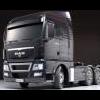Search the Community
Showing results for tags 'erp'.
-
Source: https://mothership.sg/2022/11/erp-rate-increase-2022/ The electronic road pricing (ERP) rates will be increased by S$1 at seven expressway locations from Nov. 19, 2022. According to a press release by the Land Transport Authority (LTA), it has identified nine time periods across six locations for ERP rate increases as traffic speeds at these timeslots have "fallen below the optimal speed range". Increased ERP rates from Nov. 19 The affected locations are: Southbound CTE Auxiliary lane to PIE (Changi)/Serangoon Road PIE (Kallang Bahru and slip into Bendemeer) KPE (ECP) after Defu Flyover AYE before Alexandra towards City AYE after Jurong Town Hall towards City PIE (Adam and Mount Pleasant) Increased ERP rates after school holidays The revised ERP rates for four of the time periods across three locations will be implemented only after the school holidays (i.e. Jan. 3, 2023) as the traffic speeds are projected to improve temporarily during the December holidays. These are the affected ERP gantries: The price increase will come into effect for four different time periods depending on the location: 7:30am to 8am, 8am to 8:30am, 8:30am to 9am and 9am to 9:30am. Reduced ERP rates Seven other time periods across four locations will see an ERP rate reduction of S$1 during the December school holiday period from Nov. 19, 2022, and will revert on Jan. 3, 2023 onwards. These are the affected locations: The price reduction will come into effect for four different time periods depending on the location: 7am to 7:30am, 7:30am to 8am, 8am to 8:30am and 9am to 9:30am. LTA said they will continue to monitor traffic speeds and congestion levels closely and assess if ERP rates need to be further adjusted.
-
Your OBU's processing unit isn't always mounted on the passenger footwell. Depending on the car that you drive, more than one option may be available! Since November 2023, the Land Transport Authority (LTA) has been gradually replacing in-vehicle units (IUs) with the new on-board units (OBU). The OBU will pave the way for smoother traffic as we transition to the new ERP 2.0 system that is based on Global Navigation Satellite System (GNSS) technology. The OBU comprises three parts: An antenna, a processing unit, and an optional touchscreen display. For motorcycles, these three parts are integrated in a single unit, while on other vehicles, it's installed as a two- or three-piece unit based on preference. For private passenger cars, the OBU can be installed as either a two- or three-piece unit (the optional component being the touchscreen display) We previously shared our experience with the OBU transition - including our own first experiences with the unit, and prior to that, an overview of the installation process. Earlier this year, we installed the OBU in our facelifted iteration of the third-generation Kia Cerato K3, which was first released in 2016. During the installation, apart from the inclusion of the touchscreen, perhaps the second most significant decision was for the OBU's processing unit (PU) to be mounted at the passenger footwell area. It might interest drivers to know that the passenger footwell isn't the only possible position for the PU. Cars on our roads are built differently - each model bearing unique interior traits that either narrow down or widen up the realm of possibilities for where you might install your PU. When we installed the OBU on one of our cars previously (a third-generation Kia Cerato K3), we opted to have the PU mounted at the front passenger's footwell area Here, we explore the key positions we know of so far - using some of the latest and common makes and models of vehicles in Singapore as examples - and dive into which might be possible for your car. It's important to keep in mind that authorised dealers and technicians are the best parties to consult with in deciding on the installation location in your vehicle. A multitude of factors will be taken into consideration during such discussions, such as aftermarket modifications or customisations done to your car, as well as the design of your cabin, before a suitable location is recommended. Note: For ease of explanation, the examples used in this list are not exhaustive, and largely comprise new cars currently sold by authorised dealers. The actual position of your PU is ultimately subjected to technical feasibility. Position 1: The passenger's footwell Brief descriptor and key benefit: The passenger's footwell is likely the position that most of us will be familiar with, considering that this was the setup depicted in the first images that debuted of the OBU. Installed as such, the PU will be located on the left lower side of the central column, on the front passenger's side. This keeps the driver's own quarters neat and clear. Who is this for - and who is this not for? As you'll note from the list, most of our favourite family cars are appropriate for Position 1. This includes a significant proportion of the recent lineups from bestselling makes such as Toyota, BYD, Honda, Hyundai, Mazda, and Nissan today, for instance. Other notable names include the Ora Good Cat, and the Kia Niro Hybrid. Within the same general position, the exact point on which the PU will be affixed will also vary based on technical feasibility, and the shape of the centre console. Pictured here is the PU installed at Position 1 on the Hyundai Avante Hybrid, which differs slightly from the picture above of the one in the Citroen e-C4 X This position requires a suitable surface for the PU to be attached to using adhesives - in other words, surfaces that do not have much of a curvature and are non-greasy or untreated. Models that are not appropriate for this position, however, include the Kia EV6 and EV9, as well as well as recently-introduced BMW and Mercedes-Benz models. One reason for this would be the vehicles' interior finish. For example, the PU cannot be mounted in the passenger footwell of most modern Mercedes-Benzes due to the finishing (e.g. leather or fabric) and curvature of the footwell area. (We'll come back to these examples in just a bit.) Models that can opt for Position 1 Models that cannot opt for Position 1 Recent models from BYD Recent electric models from Citroen Recent models from Honda Recent models from Hyundai Recent models from Mazda Recent models from Nissan Ora Good Cat Recent models from Toyota Recent models from Mercedes-Benz Recent models from BMW Kia EV6, EV9 Position 2: The driver's footwell Brief descriptor and key benefit: A second position available for the PU is within the driver's footwell area. This is effectively the mirror image of Position 1: On the right side of the front central column, near the driver's side. For starters, only cars with interiors that are deemed to have sufficient space so as to not cause discomfort to the driver can allow for Position 2. For safety reasons, the PU in this position will be secured by nuts and bolts (don't worry, nothing can be seen). Given the choice between Positions 1 and 2, the latter is likely to be best for drivers who prefer to have the PU as near to them as possible - and do not wish to reach out to the passenger's side. The PU cannot be installed at Position 2 for the entire BYD lineup currently, including the likes of the BYD Seal and BYD Atto 3 Who is this for - and who is this not for? Singaporean drivers will find that most of their favourite family cars can accommodate this position too. Popular examples suitable for Position 2 include recent models from Mazda, Nissan and Toyota. However, others - such as BYD's entire lineup currently, as well as Citroen and Kia's EVs - cannot have the PU in Position 2 for a few reasons. Installation at Position 2 is also not encouraged for cars that still use a foot brake, such as the current-generation Honda Freed As with Position 1, both the surface panel and curvature of the front central column need to be suitable for installation in Position 2. Naturally, maintaining sufficient space on the driver's side is important, too. But there are other possible explanations, including the presence of knee airbags in certain models. You may also know that some models like the Honda Freed still have a foot brake - which will be obstructed when the PU is installed on the driver's side. Models that can opt for Position 2 Models that cannot opt for Position 2 Recent models from Honda - except the Honda Freed Most models from Hyundai Recent models from Mazda Recent models from Nissan Recent models from Toyota Recent models from Mercedes-Benz and BMW (same reasoning as above) Recent models from BYD, Citroen and Kia Ora Good Cat Honda Freed Hyundai Ioniq 5 Position 3: Under the glovebox Brief descriptor and key benefit: Position 3 sees the PU installed underneath the glovebox - which requires a relatively flat surface for the PU to be attached with adhesive. This allows for the PU to be hidden from sight, and for drivers to retain and enjoy a more minimalist look in their car interiors. Owners of the Polestar 2 will also be able to have their PUs installed beneath the car's glovebox Who is this for - and who is this not for? Position 3 is where many Mercedes-Benz and BMW owners will see the PUs of their OBUs installed. Based on these vehicles' layout and finish, we understand that this may also be the only feasible location for most of them. Models that can opt for Position 3 Models that cannot opt for Position 3 Recent models from Mercedes-Benz Recent models from BMW Recent models from Honda Recent models from Toyota Selected models from Hyundai Polestar 2 Recent models from BYD, Kia, Mazda, Nissan, and Subaru Currently, the only mass market brand that allows for the PU to be installed under the driver's seat is Subaru Position 4: Under the driver's seat Brief descriptor and key benefit: Like Position 3, installation at Position 4 keeps the PU out of sight and offers the similar benefit of keeping the interior relatively clean-looking and minimalist. The catch, however, is that this is only applicable for vehicles that have sufficient clearance under the seat for the unit to be installed. Which brings us to… Who is this for - and who is this not for? …the fact that Position 4 may likely be one of the more out-of-reach position for cars (both literally and figuratively). If you're into a certain sort of rugged vehicle boasting symmetrical all-wheel drive, however, you're in luck. Currently, Sgcarmart only knows of one mass market brand in Singapore that allows for installation under the driver's seat - and that is Subaru. Another position: Floating centre console Beyond these main positions, however, there is yet another area that appears to be on the rise for newer cars. Carmakers that have optimised the front quarters of their cars to create more interior space have one special benefit: An uninterrupted area flowing between the front passenger and driver, which we refer to as a 'floating centre console'. The PU can be installed beneath the floating centre console on modern EVs, including the Volkswagen ID.4 and Hyundai Ioniq 5 (the latter only allows for this installation position) With this space freed up, some dealers are also allowing for customers to choose the centre console area as a point of installation for their PU. The floating centre console is perhaps most commonly associated with electric vehicles (EVs) - but even combustion-powered cars with floating centre consoles can allow for this position. Examples of popular EVs include the likes of the Hyundai Ioniq 5, the Volkswagen ID.4 and ID.5, and - as mentioned earlier - the Kia EV6 and EV9. A quick recap! As evidenced by the list above, it's really not just the passenger footwell where you can install the PU of your car's new OBU. A good range of alternatives might be possible as well, each bringing with it its own unique benefits. Again, however, it must be reiterated that the position of installation is ultimately dependent on your car model (and the possible modifications you may have made to it), which consequently influences the technical feasibility of each position. As mentioned above, motorists are encouraged to consult their preferred authorised workshops and technicians during their OBU installation appointments. Owners of existing vehicles are also welcome to install their OBUs early, and those who wish to do so can contact their preferred authorised workshop directly to schedule their installation together with their regular servicing appointment. In other words, there is no need to wait for notification, and no more booking via the microsite; drivers need simply contact the workshop directly to schedule the OBU installation. Finally, to maximise their own convenience, motorists are also encouraged to sign up for NETS Auto-Top Up - which handily eliminates the need to remove their CEPAS cards from the PU for manual top ups. All motorists who have installed the OBU can also look forward to receiving a complimentary NETS Motoring Card. Still have burning questions on your mind about what life with ERP 2.0, or life onboard with the OBU might be like? Let us know!
-
Hi all, anyone else experiencing carpark that accept the traditional cashcard with chip only? Due to my old cashcard expired after 7 years, I am using flashpay netts in my IU now. Not facing any issue with all erp and every carpark till Cathay Cineplex. When exiting the carpark, the system only can take cashcard with chip. Anyone experienced any other carpark as well?
-
Strange that no one in mycarforum has heard of this yet A few other forums have threads on this already Hope the X takeover before 2.0 fully takes off https://hack.gov.sg/hack-for-public-good-2024/2024-projects/erpx/
-
I pray this gets approved soon, fingers crossed 🤞 "The Electronic Road Pricing (ERP) system plays a critical role in managing traffic congestion in Singapore. The current infrastructure has reached end-of-life and needs to be decommissioned soon. Its successor, ERP 2.0, has encountered significant headwinds in the public eye. ERP X is our attempt to prototype a possible way forward, with the goal of starting a conversation around alternative implementations." https://hack.gov.sg/hack-for-public-good-2024/2024-projects/erpx/
-
Testing of Future Traffic Management Systems Commences at Major Traffic Nodes The Land Transport Authority (LTA) will be testing the efficacy of Automatic Number Plate Recognition (ANPR) camera systems and Dedicated Short Range Communications (DSRC) beacons at various locations along expressways and major thoroughfares from today until 2019. The use of ANPR technology will facilitate enforcement, while DSRC beacons will also be installed in some areas to enhance positioning accuracy in Singapore’s highly urbanised environment. These tests will enable LTA to determine the performance and reliability of such technologies under various real-life environmental and traffic conditions for future traffic management systems which will leverage Global Navigation Satellite System (GNSS) technology. 2. These technologies do not require heavy physical infrastructure and will be mounted on existing roadside infrastructure such as overhead bridges, overhead gantry signages, lamp posts, as well as EMAS gantries. Please refer to Annex A for the details of these locations and an example of the equipment that will be mounted on existing roadside infrastructure. 3. Testing equipment will also be mounted onto vehicles, which will be deployed at localised areas such as Tuas South from April 2018, before expanding island-wide for testing. Please refer to Annex B for an example of the equipment that will be mounted onto vehicles. Annex A: Locations of equipment installation for testing Annex B: Example of equipment that will be mounted onto vehicle for testing
- 5 replies
-
- latest car-related discussio
- erp
-
(and 1 more)
Tagged with:
-
This will push for more employers to stagger office hours. I remember there were calls to de-centralize CBD some time ago, as a result, Jurong lakeside area was slated to be the next CBD area after Tampines area. http://www.channelnewsasia.com/news/singapore/morning-peak-hour-erp/864656.html POSTED: 28 Oct 2013 15:03 URL: http://www.channelnewsasia.com/news/singapore/morning-peak-hour-erp/864656.html The Land Transport Authority (LTA) is increasing Electronic Road Pricing (ERP) rates at four expressway gantries from 4 November 2013. The affected gantries are on the southbound Central Expressway (CTE) and Pan Island Expressway (PIE) slip road into southbound CTE. SINGAPORE: The Land Transport Authority (LTA) is increasing Electronic Road Pricing (ERP) rates at four expressway gantries from 4 November 2013. In a statement on Monday, LTA said it is making the adjustments following its quarterly review of traffic conditions on roads and expressways priced under the ERP system. The affected gantries are on the southbound Central Expressway (CTE) and Pan Island Expressway (PIE) slip road into southbound CTE. The rate will go up from S$5 to S$6 from 8.30am to 9am. LTA said the rates for other gantries remain unchanged. It added that the next ERP review will take place in November 2013 for the December school holiday period. - CNA/xq
-
Till recent, the term "Car-Lite City" have been used more than once by our ministers and PM. Come share your views and opinions what will be government action/plans to achieve this "Car-Lite City" vision. 1. Reduce COE Quota (OCS) 2. Increase Tax (Road Tax, PARF, ARF) 3. Increase ERP Charges 4. ???
-
Source: https://mothership.sg/2022/02/erp-rates-aye-cte-rise/ Electronic Road Pricing (ERP) rates will be raised at 10 gantries along two expressways, said Land Transport Authority (LTA) in a news release on Feb. 10. Due to easing of restrictions With the easing of workplace restrictions from Jan. 1 2022, where 50 per cent of those who can work from home are allowed to return to the office, traffic has built up at certain stretches on the Ayer Rajah Expressway (AYE) and Central Expressway (CTE), said LTA. To manage congestion at these locations, ERP rates will rise by S$1 at the following gantries during the specified time periods: The adjustment will take effect from Feb. 14. Traffic speeds generally optimal Following this adjustment, ERP will be charged at 7 locations, compared to 29 locations pre-Covid, said LTA. LTA noted that traffic speeds have remained generally optimal on all arterial roads, including those within the Central Business District. This is based on LTA’s monitoring of traffic conditions in January 2022, following its latest review of Electronic Road Pricing (ERP) rates. ERP charges will thus remain at S$0 at these locations until the next review, and rates for other previously announced time-slots and gantries remain unchanged. LTA added that it will continue to monitor traffic speeds and congestion levels closely and assess if ERP rates need to be further adjusted as safe management measures continue to evolve.
-
Due to the pandemic, ERP charges were suspended for some time. With the pandemic under control, ERP charges have been reinstated with a heavier price...literally! And for this group of motorists, they decided to pull a stunt to save the extra dollar: What Happened? A group of local and Malaysian motorcyclists, in addition to a pair of heavy vehicles, decided to pull up at the shoulder of a slip road towards an expressway to save themselves a couple of dollars by avoiding ERP charges. As the heavy vehicles were oversized, they obstructed the path of other motorists entering the expressway and slowed traffic along the slip road. The cam vehicle travelling on the slip road towards the expressway was undoubtedly frustrated at the inconsiderate acts of these individuals and blasted his horn at them while driving past them. Back in those pre-pandemic days, waiting at the road shoulder for the closure of an ERP gantry was a relatively common sight, especially in places where ERP charges can be as costly as $3 per entry. However, this trend died down when ERP charges were suspended due to COVID-19. Now with ERP charges back in operation, would we witness more of these inconsiderate acts? Netizens' Comments Quite a savage comment if you ask me😰 No thank you, sir! Avoid ERP charges, just to kena summon😐 ========= Be the first to get the latest road/ COE news, and get first dibs on exclusive promos and giveaways in our Telegram SGCM Community. Join us today!
- 1 comment
-
- erp
- motorcycle
-
(and 5 more)
Tagged with:
-

Why did this Hiace driver jam on the brakes right before the ERP gantry?
thatJDMahboy posted a blog entry in MyAutoBlog
No one likes to pay for Electronic Road Pricing (ERP) charges, and sometimes it's funny to see how a simple system that helps regulate traffic flow has the potential to cause so much frustration for people like this Hiace driver. Watch the video here: This incident occurred at ERP 42 on the slip road from the Pan Island Expressway (PIE) to the Central Expressway (CTE). What happened? As the cam car approaches the slip road towards an ERP gantry, a Toyota Hiace can be seen hitting his brakes abruptly before coming to a halt just before the gantry. This dangerous action from the Hiace driver caused the cam car to react with an emergency brake as well. Shortly after, the Hiace driver turns on his hazard light. The cam car proceeds to overtake the Hiace and carry on with his journey, only for the Hiace driver to drive off. Possibilities At first glance, it seems as though the Hiace driver was attempting to avoid ERP payment by waiting for the ERP timer to end. However, a closer look at the ERP timing disregards the initial intent of the Hiace driver's action. Instead, it is highly likely that the Hiace driver either forgot to insert his stored-value card, or he was swapping an insufficient stored-value card with one that has sufficient value into his IU. Nevertheless, actions like this should not be condoned. Just pay the $10 fine or "administrative fee" and take it as a lesson learnt. Netizens' comments Modern problems require modern solutions 😎 Do or die, Hiace driver gonna get slapped with a fine. Hold up...This man has got a valid point right here. --- Thinking of selling your car? sgCarMart Quotz guarantees the highest selling price for your car. We’ll even give you $100 cash if you find a better offer elsewhere! Get a free quote to find out how much your car is worth today! -

Almost Genius at Work: Tampering with Car IU Setup
Rayleigh posted a topic in General Car Discussion
https://www.todayonline.com/singapore/jail-car-owner-who-evaded-s3400-parking-fees-using-his-motorcycles-modified-vehicle-unit?fbclid=IwAR0sV0FFc3W9rH-Ybv592M_g4nygWGg_Oa7NJrCkvYMcdToDGZNucJo1paE -
No ERP Rates Until End-Jul 2020, Drivers Heave Sighs Of Relief source: https://mustsharenews.com/erp-rates-jul/ No ERP Rates Until End-Jul 2020 After LTA Review Good news for drivers — Electronic Road Pricing (ERP) gantries will remain shut until 26 Jul 2020 following a review, the Land Transport Authority (LTA) said on Monday (22 Jun). Due to optimal traffic speeds on expressways as well as arterial roads, drivers won’t have to pay any ERP tax until the next rate review. The next review ends on the 4th week of Jul. ERP rates review started after ‘Circuit Breaker’ LTA started a review of ERP rates on 2 Jun, after Phase 1 began following the ‘Circuit Breaker’. They wanted to know if they had to adjust rates based on traffic during this transition period. For now, their answer is a resounding ‘no’, and drivers won’t have to divert their routes based on ERP taxes at least until the 4th week of Jul, when the next review concludes. Any new rates will take effect on 27 Jul. Enjoy zero rates while they last While drivers are doubtlessly hoping for the retirement of the ERP as a whole, the rates are subjected to monthly reviews at the moment. If the economy gets back to where it once was, traffic congestion may follow. Currently, cars are reaching optimal speeds, meaning there is little to no congestion on the roads. This is presumably due to the fact that most workers are still asked to telecommute during Phases 1 and 2. However, this may change in future as we continue to reopen the economy and workers go back to workplaces. For now, what we can do is enjoy the zero rates and pray that the next review yields similar results.
-

Malaysian motorcyclist goes off road to escape ERP charges
chitchatboy posted a blog entry in MyAutoBlog
Now this is pretty high level stuff. We have yet to see anyone try escaping ERP charges like this Malaysian biker did. Posted on ROADS.sg and COMPLAINT SINGAPORE's Facebook page is a clip of a Malaysian biker trying to 'siam' the ERP gantry by riding off road. The video is pretty self explanatory as we can see the Gantry on the slip road from the PIE merging into the CTE towards Ang Mo Kio, with the Motorcyclist slowly bumping along on the grass. That is some commitment there for sure, we reckon. -
Hi guys my Erp IU failed. Can i just drive up to Viacom to replace it and how long will it take pls?
-
Just wondering if you are using an IU cover to conceal your cash card. I am not using one and while I am driving a friend's car that having the cover, I find it quite inconvenience. 1) can't see the deduction and remaining amount properly 2) can't remove the card easily 3) doesn't the cover hint that a card is in there?
-
Hi guys, my IU came with the new car and is about 1 year old. Recently after deduction of fee from exiting a HDB carpark, the IU start to show Err SC. The strange thing is that it can still detect ezlink card/net flash pay. I have checked my Cashcard using a top up machine and I was able to read the balance so I assumed the Cashcard is working fine. Now I am still able to enter my season parking and able to pay for parking using ezlink card. Anyone encountered this before? I am contemplating to change the IU a not as next year, the new IU will be introduced. I don't wanna waste time going to LTA. On the other hand, as my job requires me to run around Singapore and I know some car park only accepts the old school chip cashcard. Zzz. Uploaded a video to show what I mean.
- 8 replies
-
- iu cashcard
- erp
- (and 7 more)
-
Saw the sign board that Bradell to AMK Ave 1 will be closed from 12mn to 5am on14 & 15 Feb for gantry launching. ERP gantry ???
-
As above. I don't usually travel around this period of time. But when I did yesterday, it was very crowded for the time stipulated on CTE. At the back of my head was wondering...... "who are really these ppl driving on the road at this hour? Aren't they suppose to be at work?" I personally took off yesterday to attend to some personal matters. So how about the rest? Outdoor sales, delivery, construction trucks, taxis, insurance agents, tai tai heading for tea-break?? Or everybody just like me took off on the same day to do some personal errands?
-
The Jakarta provincial government is expected to begin an intensive public campaign to educate motorists on its Electronic Road Pricing (ERP) system in the next few months. The city's administration wants to implement ERP by the end of 2015. It has been studying the system to reduce traffic congestion since 2006. "We have prepared the concept for an intensive socialisation in two to three months' time on how the community can be informed of the ERP concept in a big and complete way," said Leo Armstrong, head of the ERP management unit at Jakarta Transportation Agency. "The government will lead the campaign." Two ERP gantries have been erected at two busy roads to test the system. Trials have already been completed and the local government says the results are encouraging. 'PUBLICITY STUNT' However, transport analysts are not convinced. "This is like a publicity stunt where they just put some fancy gantries in the middle of the road," said Yoda Adiwinarto, country manager at the Institute for Transportation and Development Policy. "The transport agency claimed that they want to try the effectiveness of the gantry; they want to try whether the on-board unit will work well. The problem is that all the on-board units that they installed were only for the official vehicles. So why bother putting the giant gantries on the public roads? Just try it somewhere nobody knows." The tender for the implementation of the ERP system is expected to be released in June. A one-day workshop will also be conducted among various stakeholders to discuss road pricing regulations. One of the challenges facing the implementation of ERP concerns motorists using small shortcut roads. Jakarta has a complicated network of roads which includes small shortcut roads. The provincial government is well aware that motorists may try to bypass the ERP by using shortcut roads. But while taking such a route may save some money, it may not save time because during peak hours shortcut roads are even more congested. Jakarta governor Basuki Tjahaja Purnama has set a target for the ERP system to be completed by the end of 2015. Transport analysts believe this may not happen because of the lack of progress on the ground. In addition, the project has been hit by numerous delays over the years. MIXED VIEWS Motorists have mixed views about the effectiveness of electronic road pricing. "Sometimes electronic pricing can be a solution for the traffic but sometimes I think a collaboration system electronic and manual system could be integrated to be a solution in Jakarta because not all the people in Jakarta support electronics," said one motorist. "I think we need more, wider roads," added another motorist. "The ERP will not have any effect on congestion." Jakarta is struggling to keep vehicle population down, and it hopes electronic road pricing, which means higher costs for private vehicles, will help to solve the problem. At the same time, it is improving the public transport infrastructure to encourage motorists to turn to buses and trains instead. Source: http://www.channelnewsasia.com/news/asiapacific/indonesia-motorists-to/1886608.html



.png)












